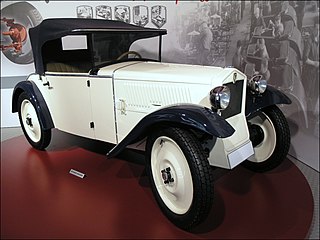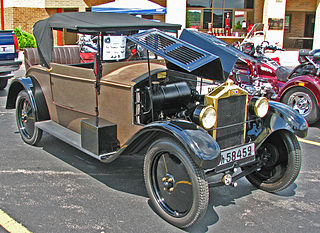 W
WThe DKW 3=6 was a compact front-wheel drive saloon manufactured by Auto Union GmbH. The car was launched at the Frankfurt Motor Show in March 1953 and sold until 1959. It was also named as the DKW Sonderklasse and, following the factory project number, as the DKW F91. From 1958, by which year the car's successor was already being sold and the earlier version had therefore become, in essence, a ‘run-out’ model, it was badged more simply as the DKW 900.
 W
WThe DKW Typ 4=8 is a small rear-wheel drive two-stroke V4 engined car produced at the company's Spandau plant by DKW. It was launched at the Berlin Motor-show in 1929 as a successor to the DKW Typ P built at the same factory, although the DKW Typ P 4=8 was significantly larger than the Typ P: in terms of market positioning a more direct successor to the DKW Type P was probably the DKW F1 produced in Zwickau from 1931.
 W
WThe DKW 3=6 was a compact front-wheel drive saloon manufactured by Auto Union GmbH. The car was launched at the Frankfurt Motor Show in March 1953 and sold until 1959. It was also named as the DKW Sonderklasse and, following the factory project number, as the DKW F91. From 1958, by which year the car's successor was already being sold and the earlier version had therefore become, in essence, a ‘run-out’ model, it was badged more simply as the DKW 900.
 W
WThe DKW F1 was a small car produced by DKW between 1931 and 1932. It was launched at the Berlin Motor Show in February 1931.
 W
WThe DKW F2 was a small car produced at the company’s Zwickau plant by DKW between 1932 and 1935. Launched at the Berlin Motor Show in April 1932, it shared its 584cc engine and front wheel drive configuration with its predecessor, but came with a longer wheelbase and a larger body.
 W
WThe DKW F4 Meisterklasse was a small car produced at the company’s Zwickau plant by DKW between 1934 and 1935. It shared its 692cc engine and front wheel drive configuration with its immediate predecessor, the DKW F2 Meisterklasse, along with its 2,610 mm (103 in) wheelbase, but the body had been restyled again, and was now more stylish, the perpendicular rear end of the F2 now replaced with a sloping rear on the mainstream body types
 W
WThe DKW F5 is a sub compact front wheel drive saloon launched by Auto Union’s DKW division in 1935 as a replacement for the DKWs F4 (Meisterklasse) and F2 (Reichsklasse) models.
 W
WThe DKW F8 compact front-wheel drive two-stroke engined saloon was introduced in 1939. The F8 was slightly shorter than its predecessor despite having a marginally increased wheelbase. The base model, known as the Reichsklasse, was manufactured only till 1940 but the Meisterklasse sedan continued in production until 1942. In addition to the saloons, cabriolet versions were offered.
 W
WThe DKW F9 was the prototype of a car Auto Union intended to launch as a successor to the DKW F8.
 W
WThe DKW F7 is a front-wheel-drive small family car launched by Auto Union’s DKW division in 1937 as a replacement for the DKW F5.
 W
WThe DKW Meisterklasse also known as the DKW F89 was a compact front-wheel drive saloon manufactured by Auto Union GmbH between 1950 and 1954. It was the first passenger car to be manufactured by the new Auto Union company in West Germany following the re-establishment of the business in the west in 1949.
 W
WThe DKW 3=6 was a compact front-wheel drive saloon manufactured by Auto Union GmbH. The car was launched at the Frankfurt Motor Show in March 1953 and sold until 1959. It was also named as the DKW Sonderklasse and, following the factory project number, as the DKW F91. From 1958, by which year the car's successor was already being sold and the earlier version had therefore become, in essence, a ‘run-out’ model, it was badged more simply as the DKW 900.
 W
WThe DKW F102 is a passenger car that was produced from August 1963 by the German manufacturer Auto Union. Superseding the Auto Union 1000, it was the last model branded as a DKW by the manufacturer and also the last West German production car equipped with a two-stroke engine.
 W
WThe DKW Junior was a small front wheel drive saloon manufactured by Auto Union AG. The car received a positive reaction when first exhibited, initially badged as the DKW 600, at the Frankfurt Motor Show in March 1957. The ‘Junior’ name was given to the DKW 750 in 1959 when the car went into volume production, but failed to survive an upgrade in January 1963, after which the car was known as the DKW F12. In addition to the saloon, a pretty ‘F12 Roadster’ was produced in limited numbers.
 W
WThe DKW Monza was a sports car built on an Auto Union DKW base. Named after the world-famous Italian Grand Prix circuit, the car set five world records in 1956.
 W
WThe DKW Munga was a DKW-branded off-road vehicle built by Auto-Union in Ingolstadt, Germany. The name Munga comes from the German phrase Mehrzweck UNiversal Geländewagen mit Allradantrieb, which translates as "multi-purpose universal off-road car with all-wheel drive"
 W
WThe Mercedes-Benz N1300 is a light commercial vehicle designed and manufactured by the Spanish subsidiary IMOSA based in Vitoria-Gasteiz, in the Basque Country, north of Spain. Its body had its roots in the Fissore-designed DKW F1000 L van of 1963.
 W
WThe DKW Typ P was the first motor car made by DKW. It was a light-weight design with a unit body made of wood and imitation leather. It was powered by a two stroke inline twin engine.
 W
WThe DKW Schnellaster, also known as the DKW F89 L, was a van produced by DKW from 1949 to 1962. Alongside the DKW F89 passenger car, it was the first vehicle to be manufactured by the new Auto Union conglomerate in Ingolstadt following the re-establishment of the business in West Germany. The model name Schnellaster translates from German to English as Rapid Transporter.
 W
WThe DKW 3=6 was a compact front-wheel drive saloon manufactured by Auto Union GmbH. The car was launched at the Frankfurt Motor Show in March 1953 and sold until 1959. It was also named as the DKW Sonderklasse and, following the factory project number, as the DKW F91. From 1958, by which year the car's successor was already being sold and the earlier version had therefore become, in essence, a ‘run-out’ model, it was badged more simply as the DKW 900.